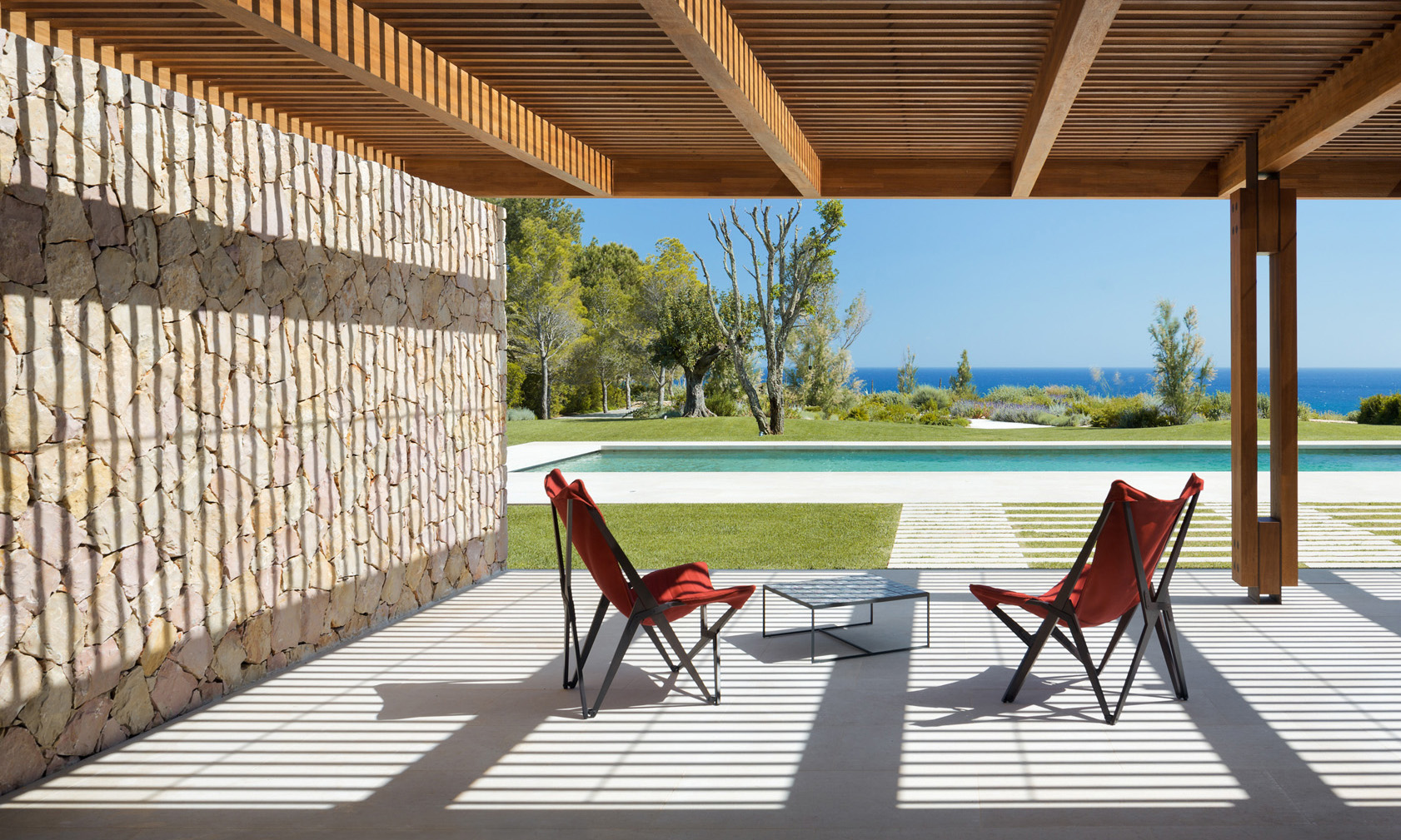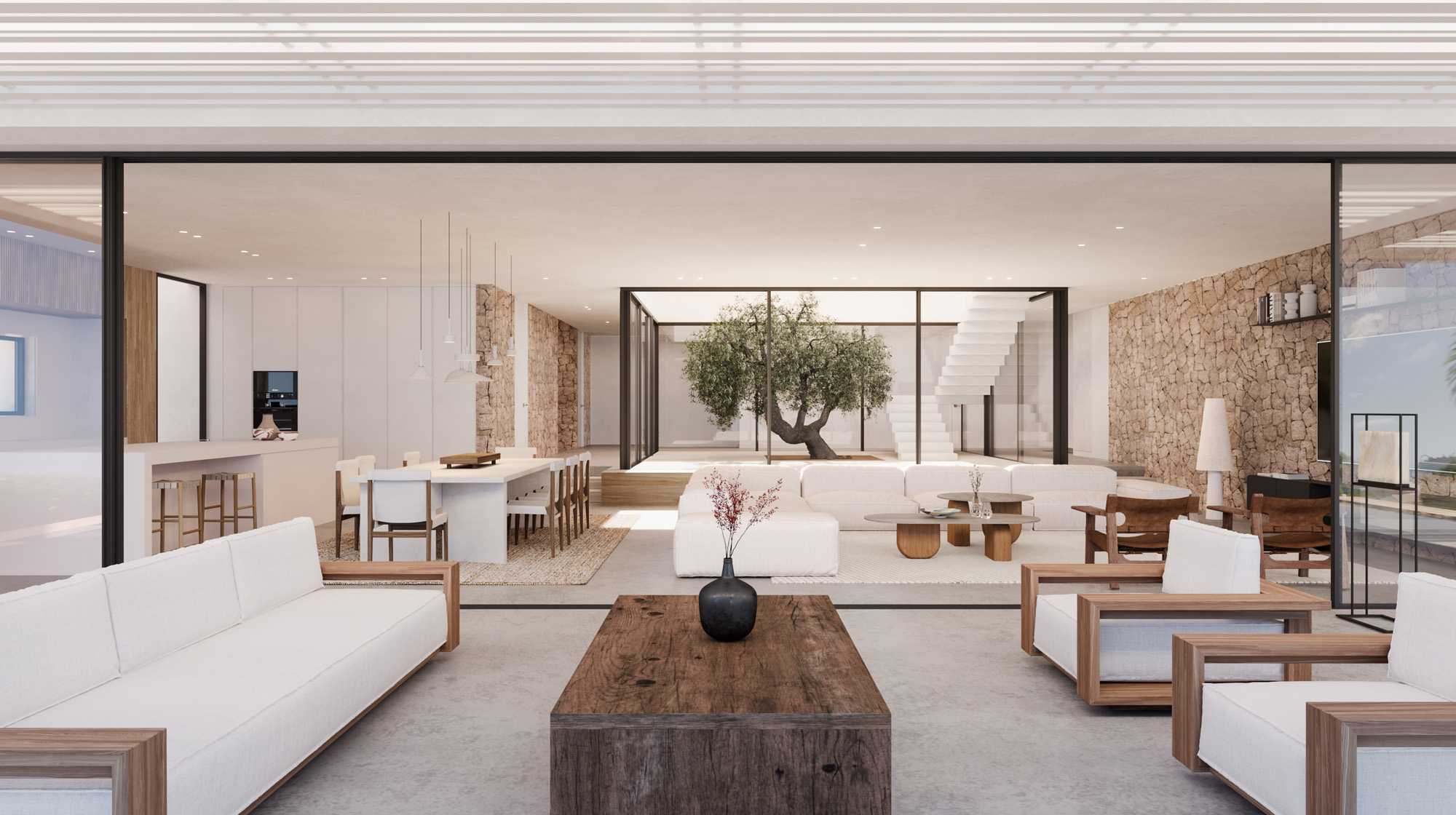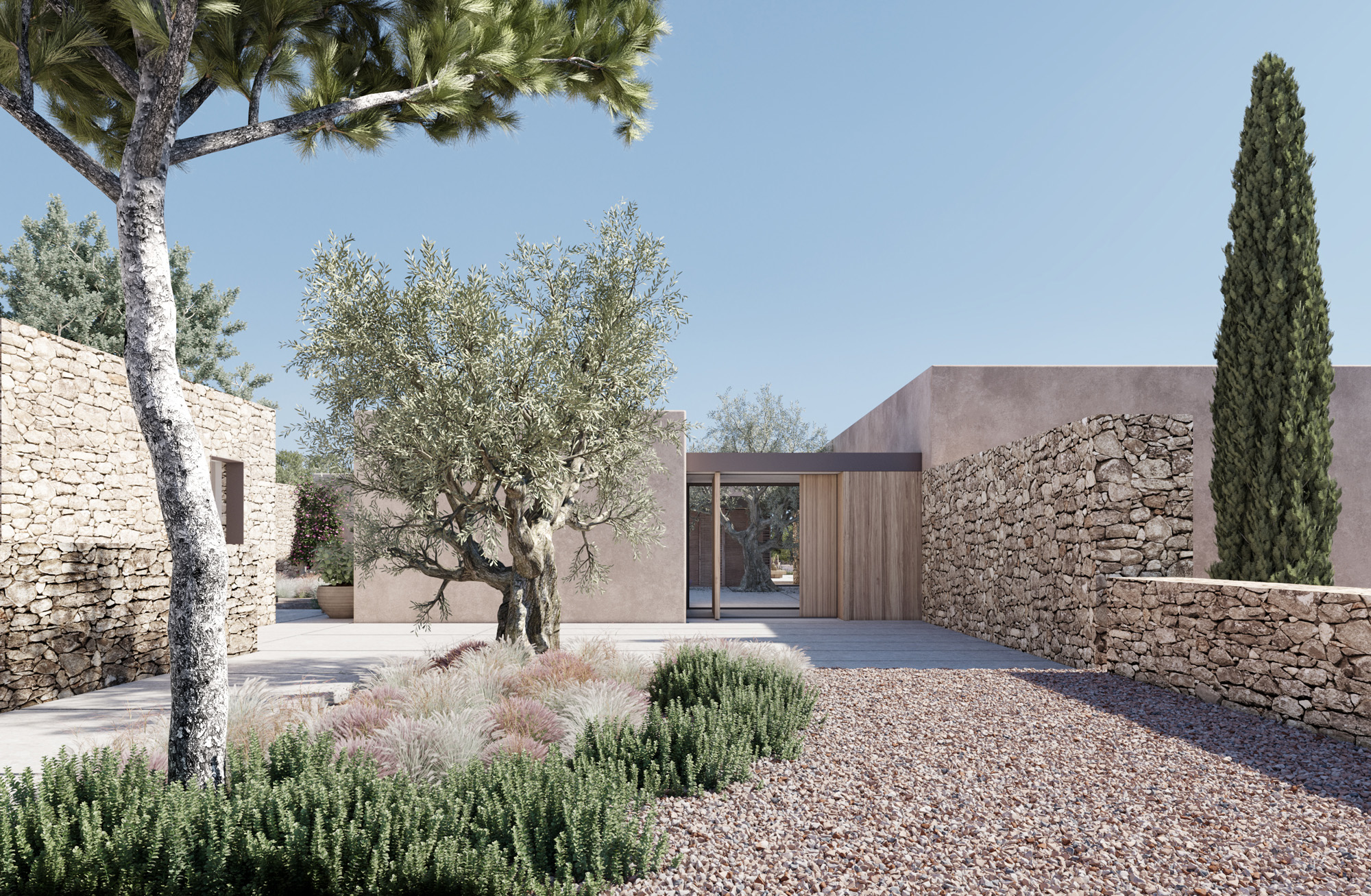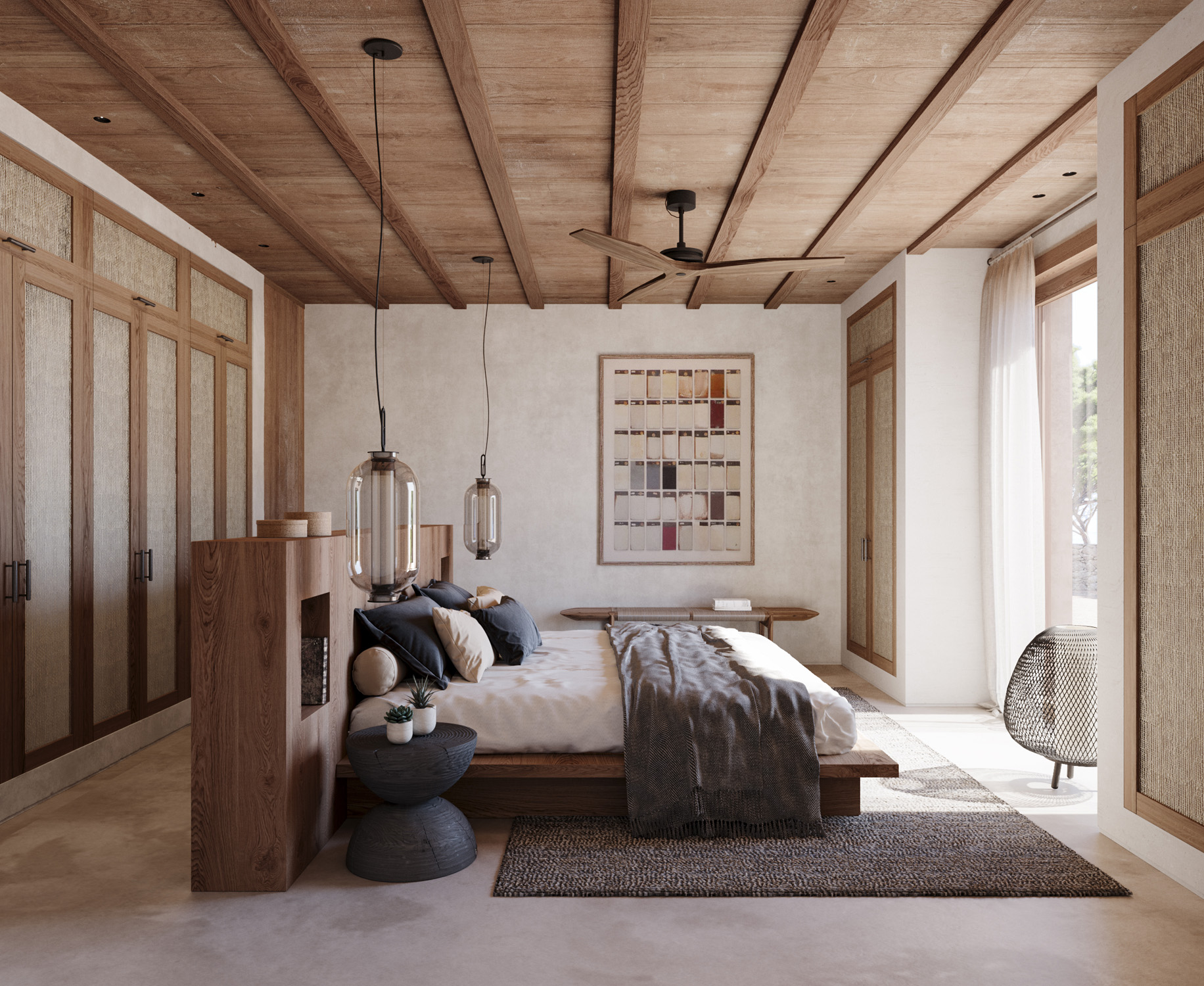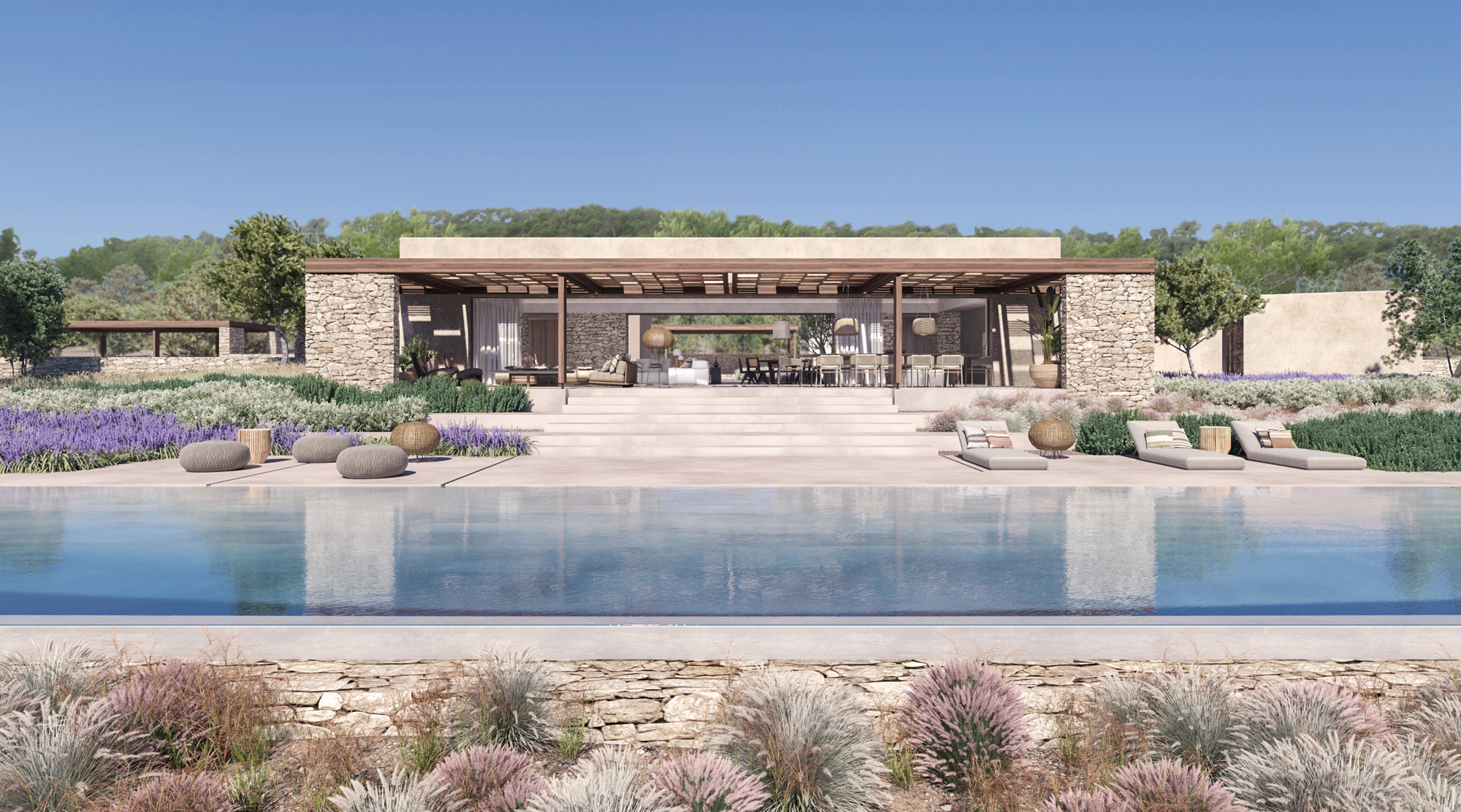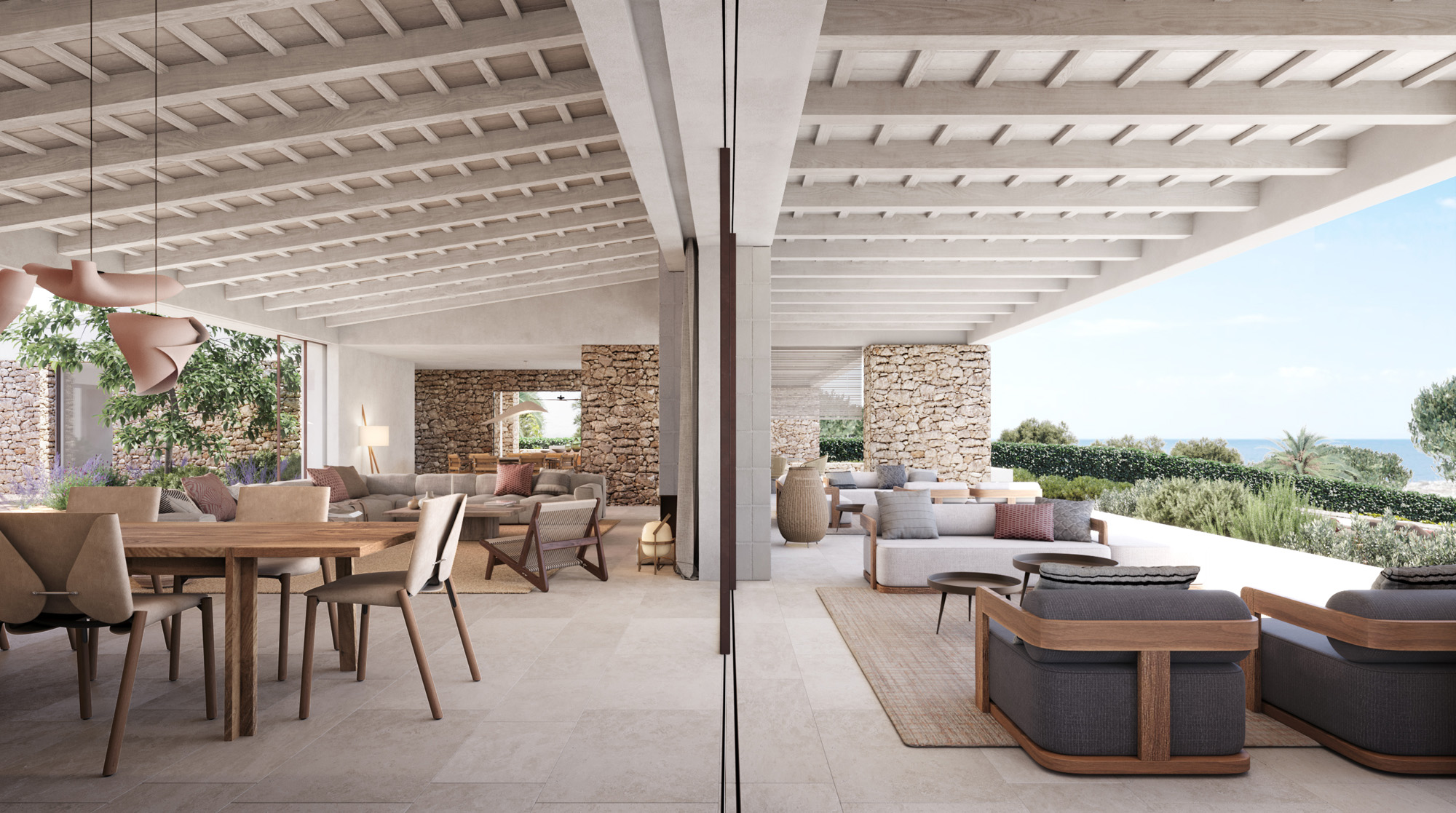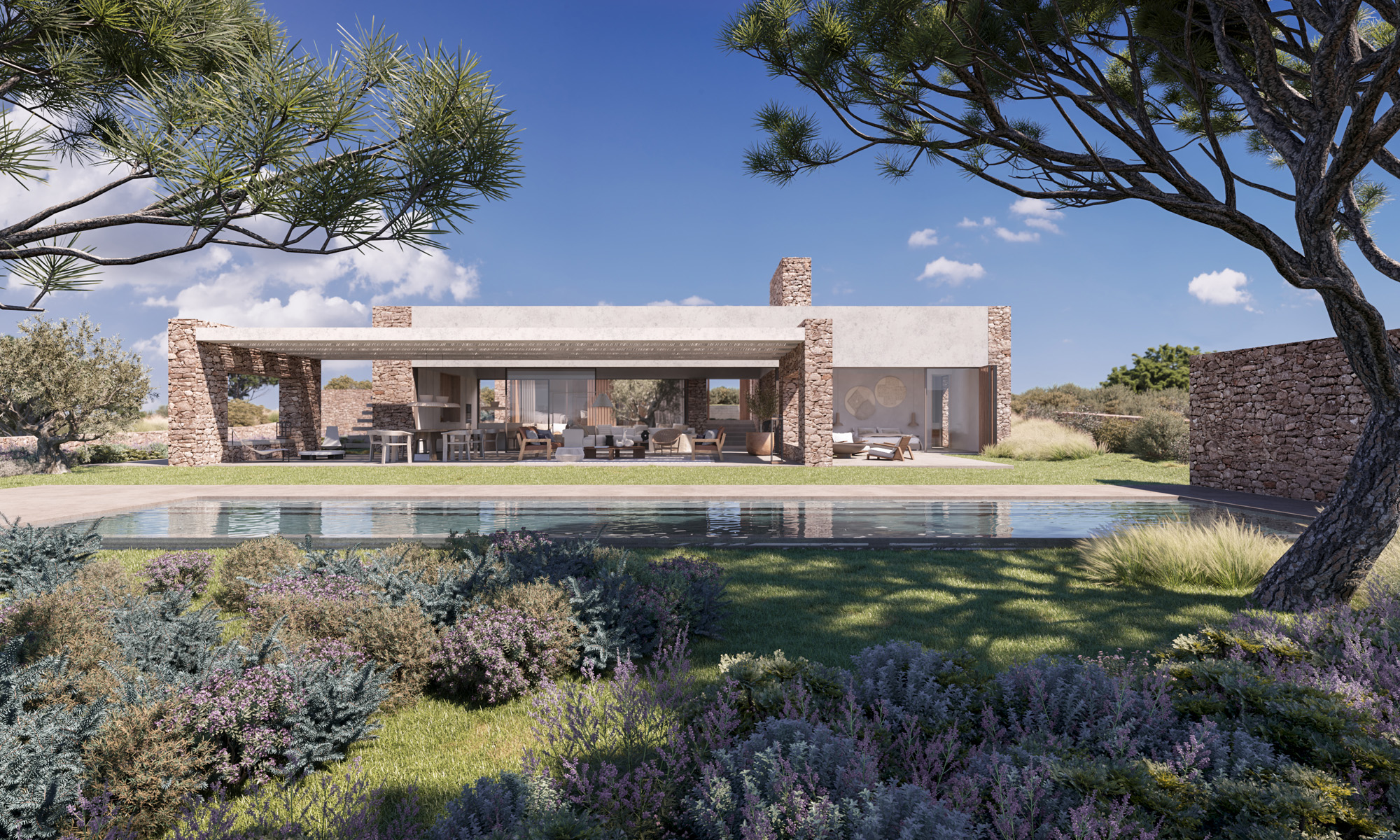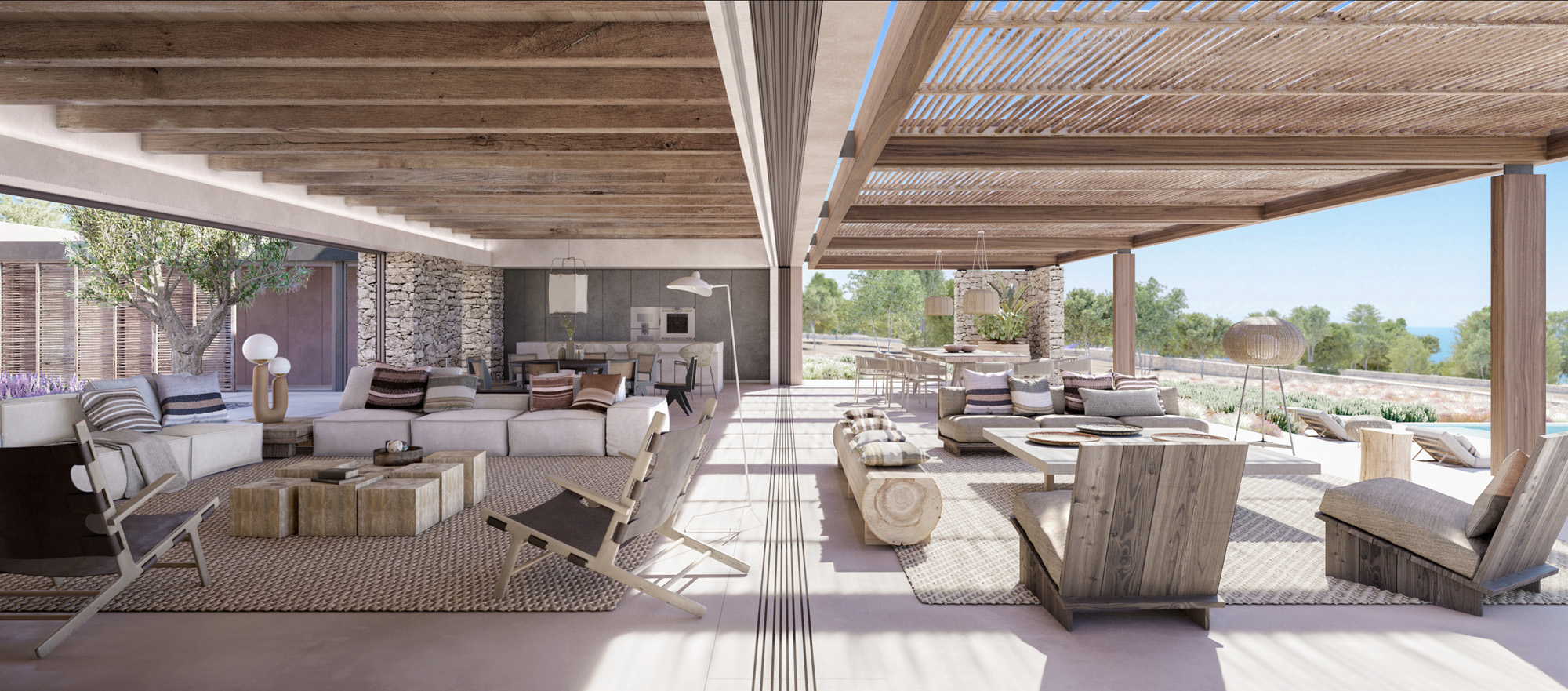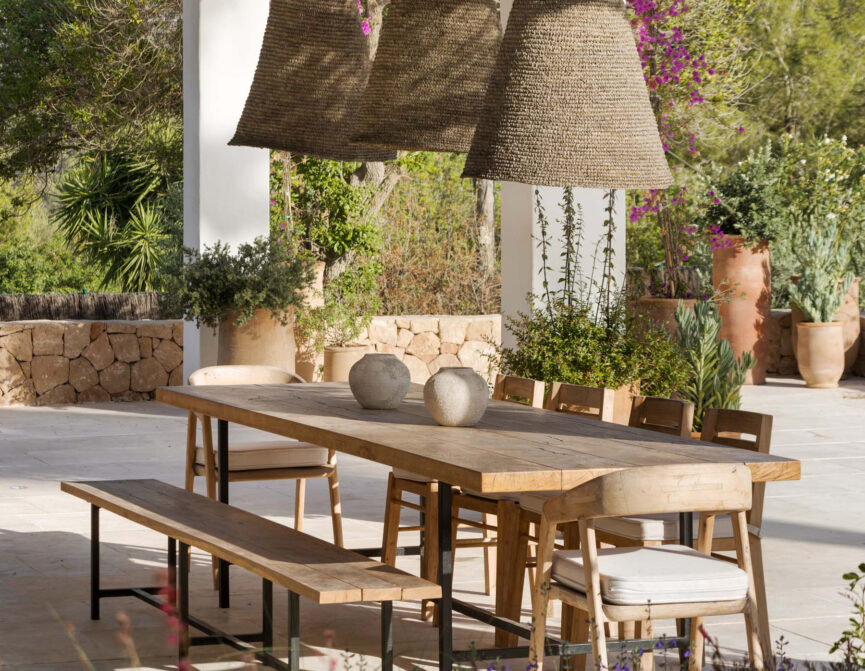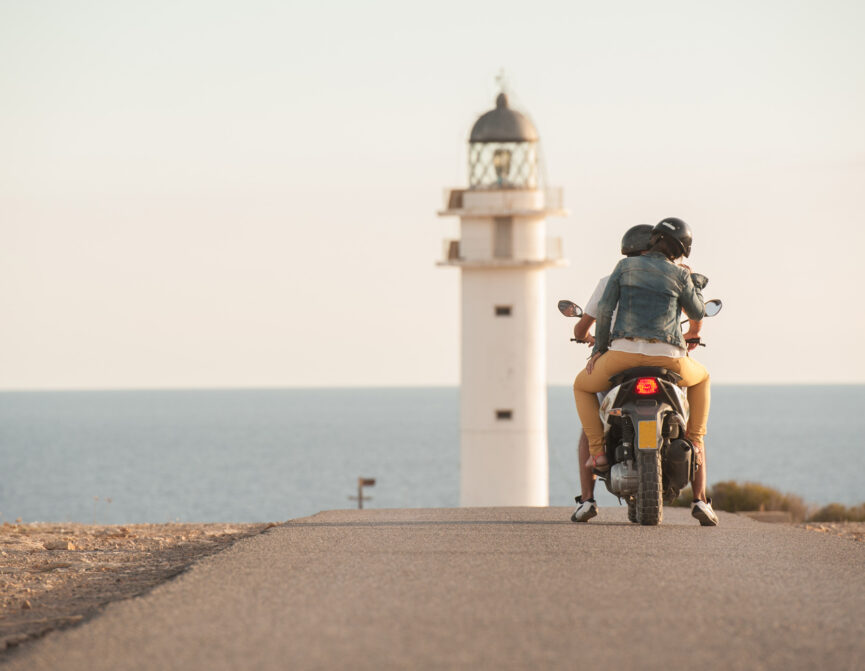The architecture and interior design practice founder Christian Sintes on creating spaces that enhance the lives lived in them.
Delivering spaces that respect nature, wellbeing and the fundamental pleasure of living is what LUV Studio does best. Guided by simplicity, the architecture and interior design practice works with individuals and brands to cut through complexity and create dwellings that enhance the wellbeing of those who encounter them.
We caught up with founder Christian Sintes – a self-proclaimed “island person” – to ask about his Balearic eye for design, blending indoor and outdoor living and how he defines, and achieves, a feeling of ease in the homes and hotels he works on.
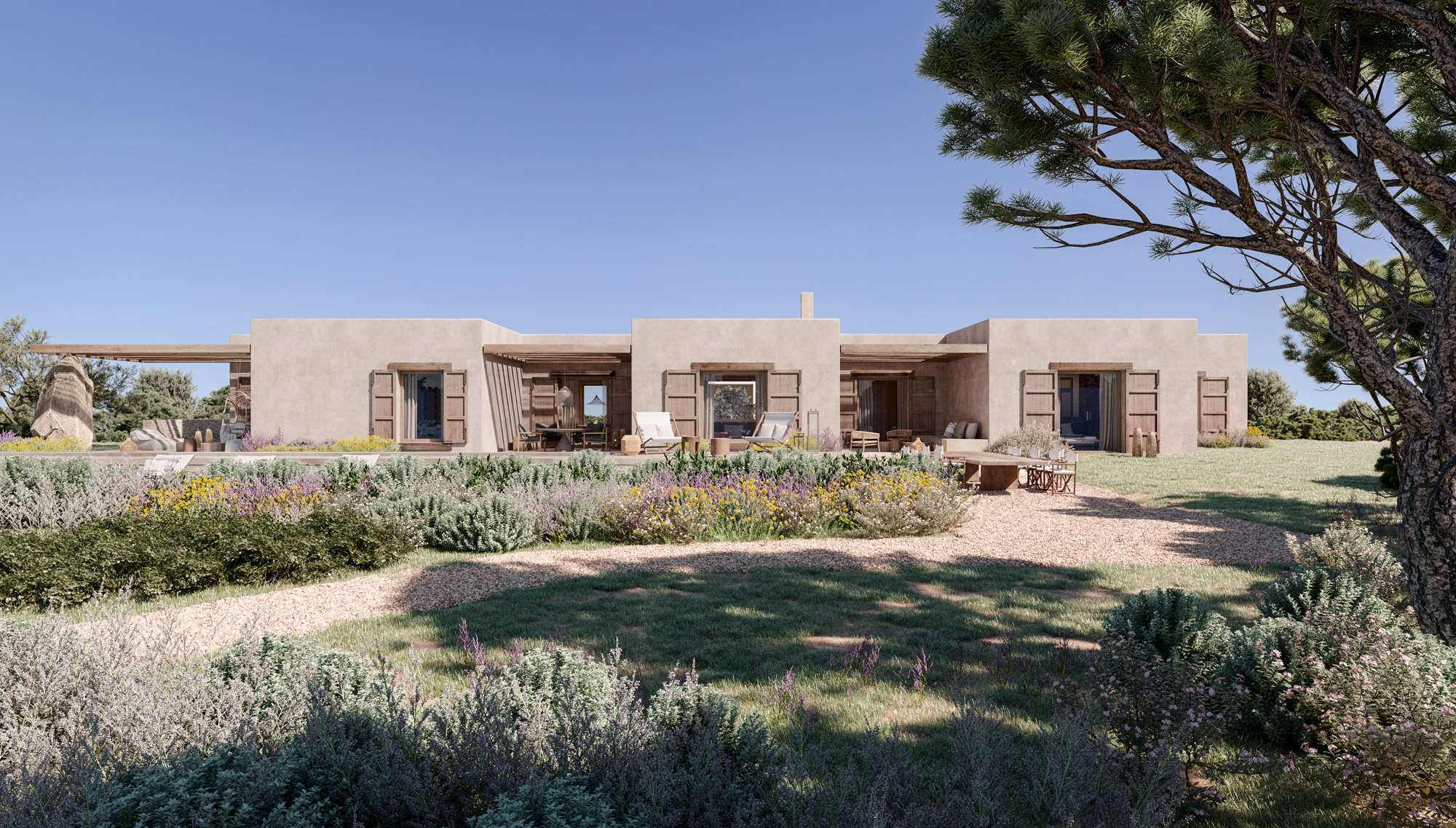
When did you first come to Ibiza? What defines the island for you?
I first came here in my early twenties and have been in love with its vibe and community ever since. Ibiza is largely known for hosting the best international DJs and its incredible night life, but it’s also a place where you find the most interesting international tribe who are looking for an alternative lifestyle approach. To me, it’s an island of contrasts; a place with a great collection of people.
How do you describe the kind of work you do at LUV Studio?
We understand architecture as a whole discipline that cannot be separated from interiors and surrounding spaces, so we provide an ‘a la carte’ scope of services that range from architectural and interior design, to engineering, licensing and investment.
Our clients’ briefs can be very different and challenging. But the common focus is always how to enhance their lives, or in the case of our corporate clients how to improve their profits.



What are the studio’s design philosophies?
It all starts and ends with our clients and our relationship with them. We are absolutely obsessed with their satisfaction, and we focus on excellence, always. At LUV Studio we build around people’s desires and business results to achieve only the very best outcomes. Respect for nature, a devotion to materials and an instinct for balancing technology with craftsmanship are key parts of our design philosophy.
Have you always had a focus on refined living, and what do you think are the distinguishing factors of this concept?
Our projects are mostly developed around a contemporary understanding of what ‘luxury’ is. To us, instead of understanding luxury as a set of over-costs and excesses, we believe that contemporary luxury is based on the fundamental pleasure of living; being surrounded in visual and tactile beauty. This is a type of luxury that does not focus on the external, but rather on inner satisfaction and wellbeing.
How do you integrate landscape and outdoor living into your projects?
The landscape plays a key role in how we design. Working in the Mediterranean means considering mostly an outdoor living lifestyle, and therefore we’re passionate about blurring the limits between indoor and outdoor areas, framing and embracing nature into the interior architecture.
What are the challenges of working on the island?
The major challenge we face is obtaining licenses. A large area of the Ibiza is naturally protected as rustic land, and the building limitations on such land involves a long management process.

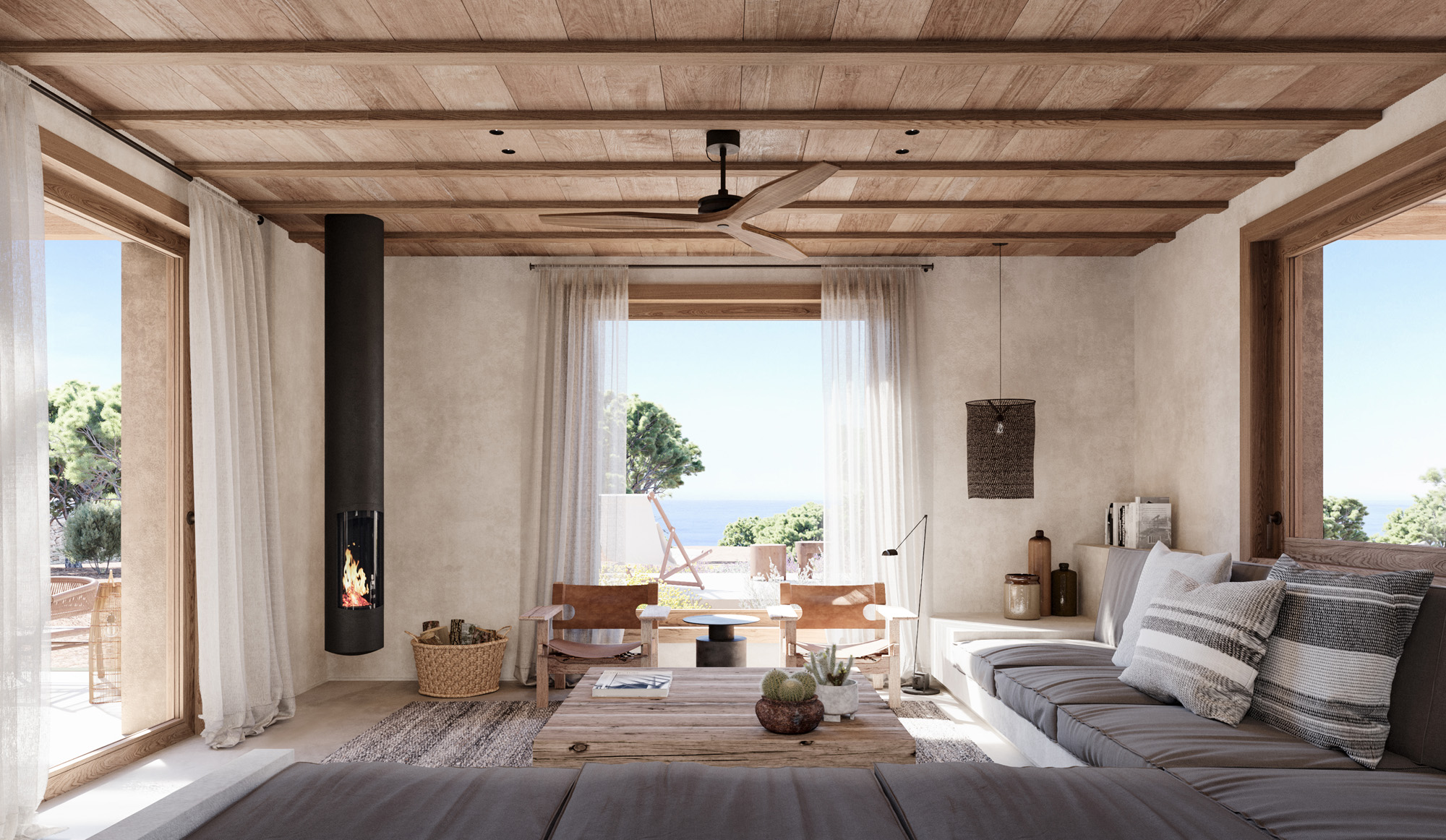
"Respect for nature, a devotion to materials and an instinct for balancing technology with craftsmanship are key parts of our design philosophy."
- Christian Sintes
What differentiates Balearic projects from the mainland work you do?
I was raised in the Balearics, so I feel emotionally attached to any kind of work we develop here. When building in the Mediterranean, you need to understand the power of the local and indigenous materials that bring the texture, the tradition and the historical connection. The use of dry stone, local Sabina woods, marés stones or whitewashed tones are key ingredients to any project we develop in Ibiza and the rest of the islands.
Designing on the islands should always be passive, taking advantage of the architectural geometry and land to ensure maximum protection from the sun in the summer and maximum daylight in wintertime. Sun protection also gives us the opportunity to design ‘shadows’ on walls and floors that can be organic, strict, irregular and playful to add great character and uniqueness to every property.
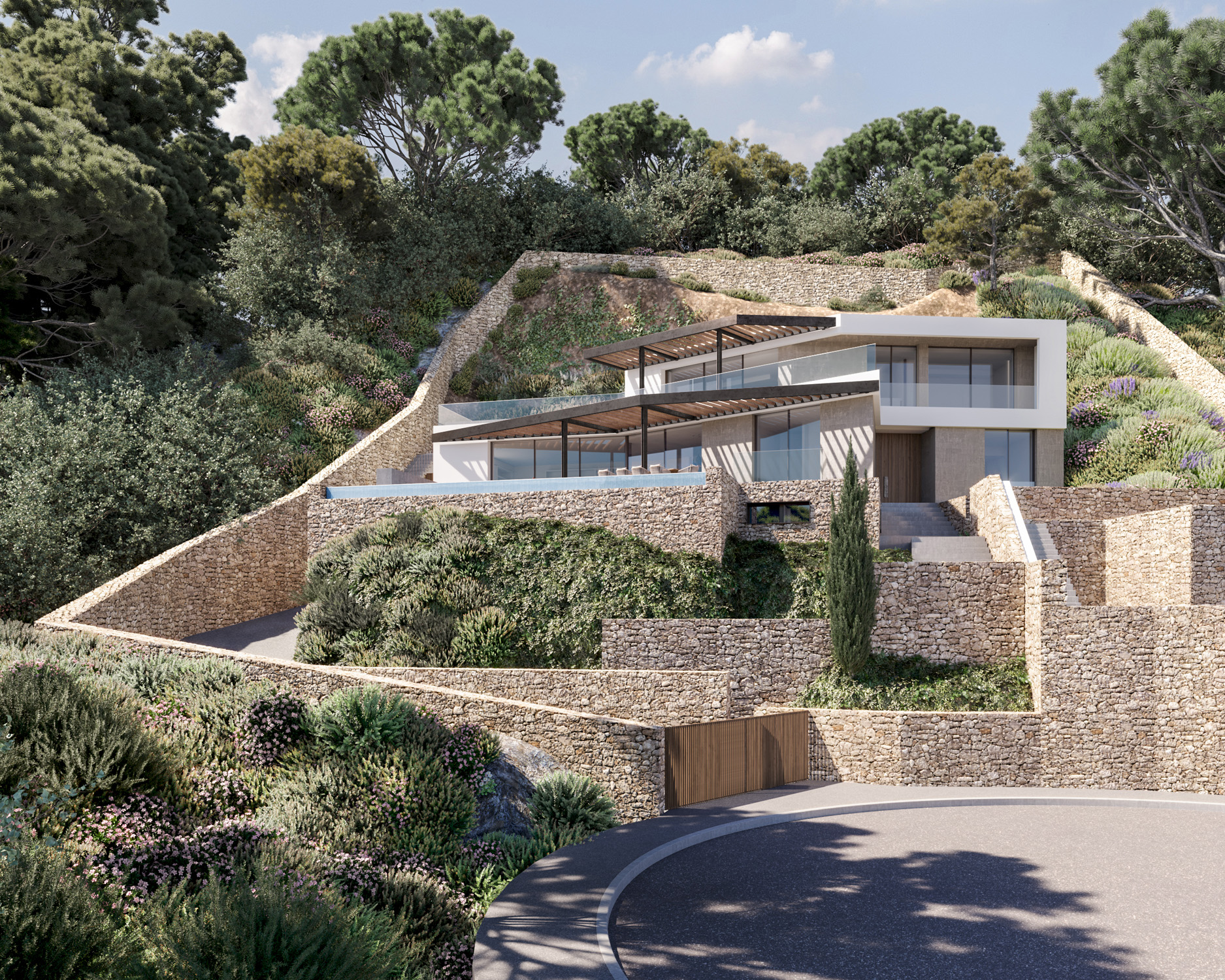

You’ve also worked on Formentera; how does that compare to designing on Ibiza?
We very much enjoy working in such a natural and powerful environment. To us, Formentera is representative of not only an island vibe, but also its ‘slow living’ approach.
This has been clearly understood not only by the island users, but also by the local authorities who have implemented very strict land implantation and aesthetic rules to new buildings or renovations, keeping the island clean from white floating boxes.
In the years you’ve been working in Ibiza, how has the island changed? What changes do you still hope to see in the next five years?
We don’t even need to go so far back: pre and post-Covid has already generated a huge change in peoples’ lives. It has made people reflect on how fragile humanity is and reconsider our priorities as a community and as individuals. People are way more aware of their priorities and enjoying life has become essential. This has undoubtedly made an impact on property sales, and Ibiza has become an even more attractive worldwide location to enjoy life’s pleasures.
What we expect to see in the next years is a less defined change between the summer and winter periods. We believe winter will get busier and the peak season will extend into the autumn and even beyond, making Ibiza not only enjoyable for its weather, but also for its fantastic first-class services.
"When designing and building in the Mediterranean, you need to understand the power of the local and indigenous materials that bring the texture, the tradition and the historical connection."
- Christian Sintes


